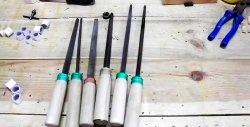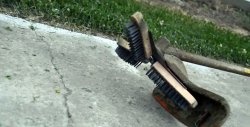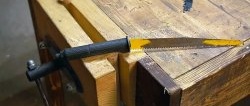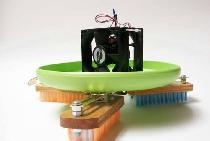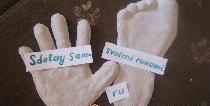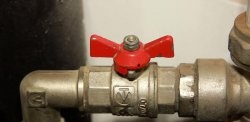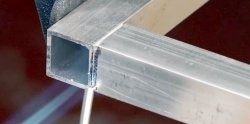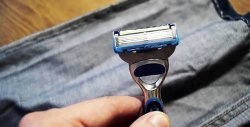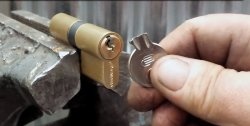How to make comfortable handles from toothbrushes using needle files
Needle files are smaller versions of files and are designed for working on small parts. The most common are straight single-ended tools, one side of which has a working notch, and the other is a long cylindrical shank for special handles. In principle, a needle file can be used for its intended purpose without a handle, but this is not very convenient, not productive enough and not entirely safe.
In order not to spend money on buying factory handles for needle files, we will try to adapt old toothbrushes for them. What else will we need for this?
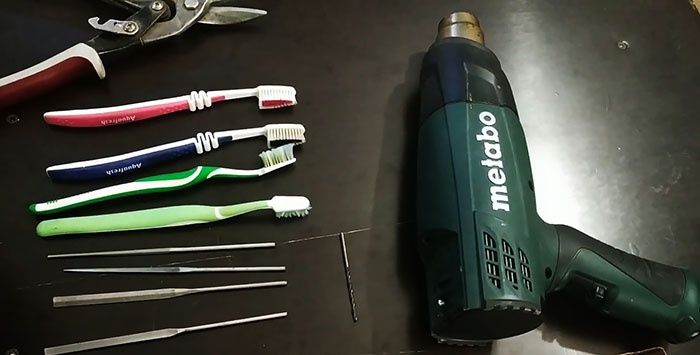
The main tool for implementing our idea will be a drill with a drill whose diameter is smaller than the diameter of the cylindrical shanks of the needle files. In addition, you should have on hand:
Adult toothbrushes have a much larger cross-section of plastic handles than the shank of the needle files.This serves as a reliable guarantee that our idea will have a continuation and reliable practical implementation.
We choose toothbrushes preferably with straight handles. Using metal scissors, we cut off the neck with the working head, leaving the part that we usually hold in our hands when brushing our teeth.
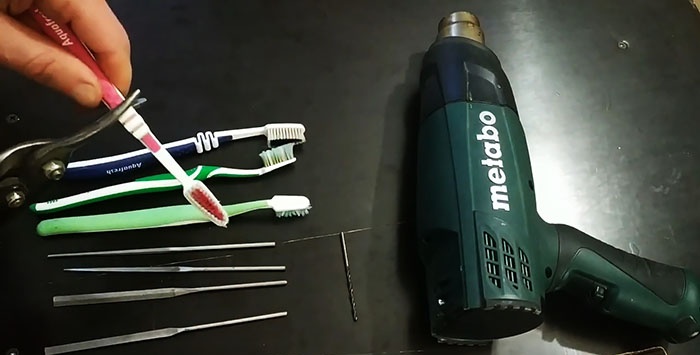
We turn on the hair dryer, let it warm up well, and securely install it in such a position that the direction of the hot air flow is vertically upward.
We slightly warm up the handles along the section of the cut and with our fingers, carefully so as not to get burned, “roll” them and, thereby, increase the strength in this place and give it aesthetic completeness.
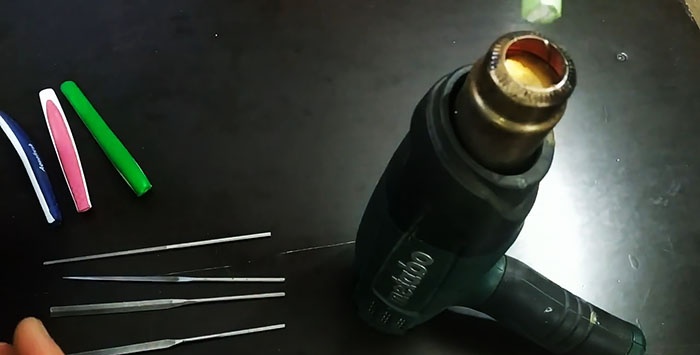
In the center of the cross-sections of the handles, we drill blind holes in depth, commensurate with the length of the file shank.
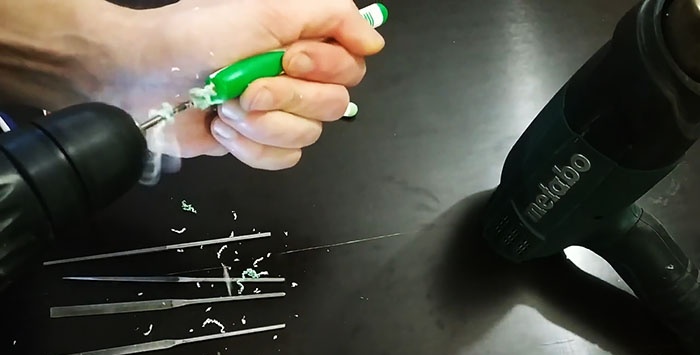
We turn on the hair dryer again and warm up the shanks of the mini files along the entire length and, without allowing them to cool, insert them into the holes drilled in the handles and push them as far as possible with manual effort.
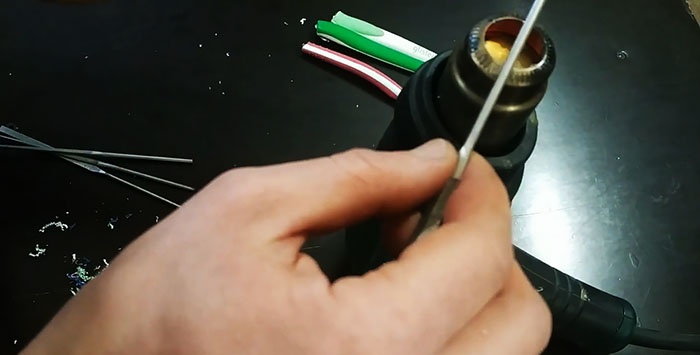
If the hole turns out to be insufficiently deep compared to the length of the shank of the given file, we pull it out and deepen the hole, and only after that we finally insert the shank of the file.
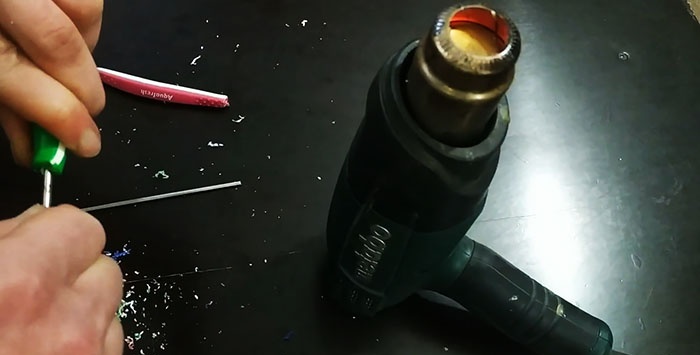
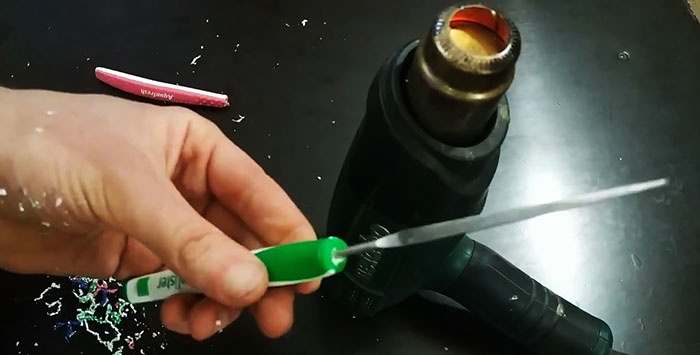
The result is a strong connection between the shank of the file and the handle of an old toothbrush. This occurs due to the fact that the heated metal shank melts nearby layers of plastic, which, increasing in volume, tightly grip the file shank, at the same time sticking to it. After the connection has completely cooled, it is almost impossible to pull the file out of the handle no matter how hard you try.
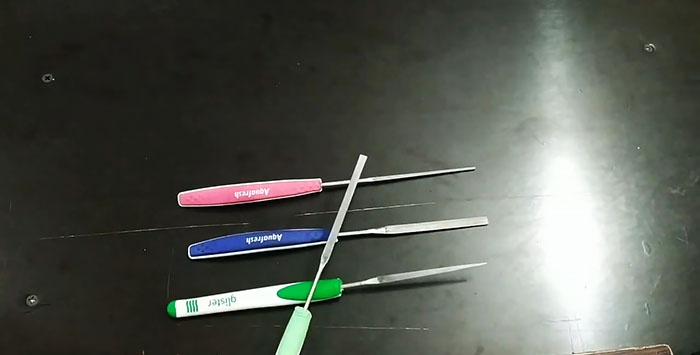
In order not to spend money on buying factory handles for needle files, we will try to adapt old toothbrushes for them. What else will we need for this?
Will need

The main tool for implementing our idea will be a drill with a drill whose diameter is smaller than the diameter of the cylindrical shanks of the needle files. In addition, you should have on hand:
- a set of worn toothbrushes;
- metal scissors;
- construction hairdryer
The process of making comfortable handles
Adult toothbrushes have a much larger cross-section of plastic handles than the shank of the needle files.This serves as a reliable guarantee that our idea will have a continuation and reliable practical implementation.
We choose toothbrushes preferably with straight handles. Using metal scissors, we cut off the neck with the working head, leaving the part that we usually hold in our hands when brushing our teeth.

We turn on the hair dryer, let it warm up well, and securely install it in such a position that the direction of the hot air flow is vertically upward.
We slightly warm up the handles along the section of the cut and with our fingers, carefully so as not to get burned, “roll” them and, thereby, increase the strength in this place and give it aesthetic completeness.

In the center of the cross-sections of the handles, we drill blind holes in depth, commensurate with the length of the file shank.

We turn on the hair dryer again and warm up the shanks of the mini files along the entire length and, without allowing them to cool, insert them into the holes drilled in the handles and push them as far as possible with manual effort.

If the hole turns out to be insufficiently deep compared to the length of the shank of the given file, we pull it out and deepen the hole, and only after that we finally insert the shank of the file.


The result is a strong connection between the shank of the file and the handle of an old toothbrush. This occurs due to the fact that the heated metal shank melts nearby layers of plastic, which, increasing in volume, tightly grip the file shank, at the same time sticking to it. After the connection has completely cooled, it is almost impossible to pull the file out of the handle no matter how hard you try.

Watch the video
Similar master classes
Particularly interesting
Comments (0)

